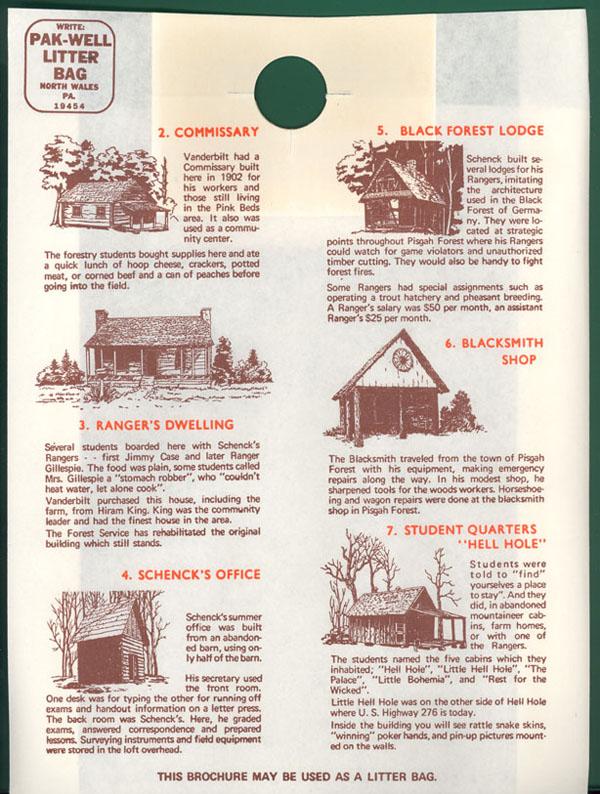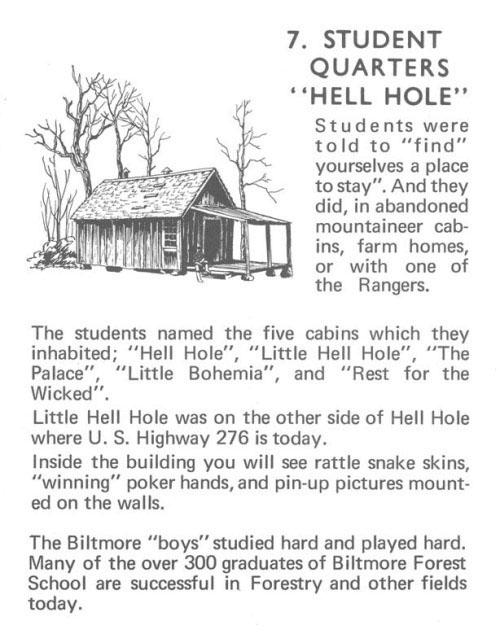October 20, 1964: Cradle of Forestry Dedication Ceremony
On this day in 1964, foresters, government officials, and others gathered near Asheville, North Carolina, at the site of the historic Biltmore Forest School. At this joint annual meeting of the American Forestry Association and the North Carolina Forestry Association, officials laid the cornerstone of the U.S. Forest Service Visitor Information Center, dedicating the Cradle of Forestry in America.
The Cradle of Forestry was envisioned as a unique indoor-outdoor museum that would celebrate the significance of the Pisgah National Forest lands to the history of forestry in the United States.
- Here, America’s first trained native-born forester, Gifford Pinchot, managed the thousands of forested acres owned by George W. Vanderbilt. Beginning in 1892, Pinchot initiated large-scale scientific forest management practices on the Biltmore and Pisgah lands.
- Pinchot’s successor, Dr. Carl A. Schenck, opened the first forestry school in America. The Biltmore Forest School operated on the estate from 1898 to 1907.
- Passed in 1911, the Weeks Law granted the federal government authority to purchase private lands for inclusion in national forests. Following the passage of the Weeks Law, several tracts of Vanderbilt’s land were among the first purchased by the U.S. Forest Service. Incorporating these tracts, a proclamation signed by Woodrow Wilson in 1916 officially established the Pisgah National Forest.
At the cornerstone-laying ceremony, Forest Service Chief Edward P. Cliff delivered remarks, which included a memorandum he drafted for a one-hundred year time capsule. Addressed to the Chief of the Forest Service in 2064, the memorandum provides interesting points to consider:
“I would like to glimpse the technological advances and the wealth of knowledge that you and your colleagues have at your fingertips. I know that it must surpass by far anything we can imagine here in 1964. Yet I am equally sure that you need all of these and more to solve what must be incredibly difficult and complex problems of forest management. . . .
“As a forester, my greatest hope is that in the decades which separate our careers, our people will have proved to be good stewards of our natural resources. It pleases me to think that each generation of foresters during this interval will have been able to build upon the work of their predecessors — just as your generation is benefiting from trees established, protected, and nurtured by us in the mid-Twentieth Century.”
The Forest History Society maintains materials related to this dedication ceremony, including newspaper clippings, event programs, brochures, and artifacts. Cleverly, the Cradle of Forestry planners printed maps and site information on litter bags given to visitors:

Perhaps the most “flavorful” part of the tour involves the description of the Student Quarters:

The materials featured above may be found in our U.S. Forest Service History Collection, under “Forestry Schools/Education: Cradle of Forestry.”
To support further research on the birth of American forestry, the Forest History Society holds several archival and image collections related to the Biltmore School, early foresters, the Forest Service, and lumber companies. Such collections include:
- Biltmore Forest School Images, ca. 1890s – ca. 1988
- Jonathan Keith Esser Collection, 1899 – 1920
- Early Forestry Education in North Carolina Oral History Interview Collection, 1959
- Images from “The Dawn of Private Forestry in America, Recollections of a Forester Covering the Years 1895 to 1914,” a Manuscript by Carl Alwin Schenck, 1954? –
- Forestry Lectures of Carl Alwin Schenck, 1904 – 1909
- The Biltmore Forestry Fair Collection, 1908 – 1909
- Laurence R. Young Papers, circa 1910 – 1953
- The Cornell Forestry School Field Trips Photograph Collection, 1928 – 1934
- The Alfred Cunningham Papers, 1910, 1931 – 1937, n.d.
- The Urania Lumber Company Photograph Collection, 1938 – 1939
- The Development of Forestry in the Southern United States Oral History Interview Collection, 1958 – 1976
- Theodore S. Woolsey, Jr., Auxiliary Photograph Collection, ca. 1900s-1910s
Additionally, FHS has collaborated with N.C. State University, UNC Asheville, and the Biltmore Estate to present The Rise of American Forestry: From Education to Practice. I suspect Chief Cliff would be impressed by the “technological advances and the wealth of knowledge” at our fingertips.

